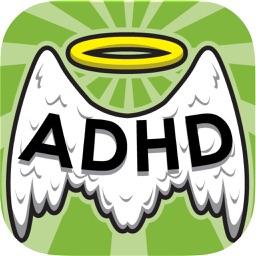ADHD and Learning Styles: Tailoring Your Approach to Education

Introduction
Attention-Deficit/Hyperactivity Disorder (ADHD) affects millions of students globally, influencing their ability to focus, organize, and process information. Understanding how ADHD intersects with different learning styles is crucial for creating effective educational strategies. This article explores the connection between ADHD and learning styles, offering practical approaches to tailor education to meet diverse needs.
Understanding ADHD and Its Impact on Learning
ADHD symptoms is characterized by symptoms of inattention, hyperactivity, and impulsivity. These symptoms can significantly impact a student’s learning experience, manifesting as difficulty staying on task, organizing work, and following through with assignments. The traditional educational environment often emphasizes a one-size-fits-all approach, which can be particularly challenging for students with ADHD.
Key Symptoms Affecting Learning
Difficulty sustaining focus on tasks or activities.
Excessive movement or inability to stay still, which can disrupt learning.
Hasty actions or responses without considering the consequences, affecting classroom behavior and performance.
Learning Styles: An Overview
Learning styles refer to the preferred ways individuals process and retain information. While there are many models, three commonly discussed styles are:
Learning through seeing. Visual learners benefit from diagrams, charts, and written instructions.
Learning through listening. Auditory learners thrive on lectures, discussions, and audio materials.
Learning through doing. Kinesthetic learners excel with hands-on activities and physical engagement.
Each style has its strengths, and recognizing these can help in designing personalized educational strategies.
ADHD and Visual Learning
Visual learners with ADHD may struggle with maintaining focus during visual presentations or interpreting complex diagrams. However, leveraging visual tools effectively can enhance their learning experience.
Strategies for Visual Learners with ADHD
Incorporate color-coded notes and calendars to help with organization and memory.
Implement visual schedules and charts to outline daily tasks and responsibilities.
Utilize graphic organizers to break down complex information into manageable visual segments.
Tools and Techniques
Present information through infographics or diagrams to simplify complex concepts.
Engage students with interactive whiteboards that allow them to visually manipulate information.
ADHD and Auditory Learning
Auditory learners with ADHD may face challenges with distractions and difficulty following lengthy spoken instructions. However, auditory strategies can still be highly effective when adapted to their needs.
Strategies for Auditory Learners with ADHD
Provide concise instructions and repeat key points to reinforce understanding.
Allow students to record lectures and listen to them as needed for better retention.
Incorporate group discussions and verbal feedback to engage auditory learners.
Tools and Techniques
Use educational podcasts and audiobooks to deliver content in an engaging auditory format.
Utilize verbal cues and reminders to maintain focus and guide students through tasks.
ADHD and Kinesthetic Learning
Kinesthetic learners with ADHD often benefit from active learning environments. However, their need for movement can sometimes be misinterpreted as restlessness or lack of discipline.
Strategies for Kinesthetic Learners with ADHD
Incorporate hands-on activities and experiments to make learning more interactive.
Provide regular movement breaks to help students stay focused and reduce restlessness.
Use tools like educational games and manipulatives to facilitate learning through physical engagement.
Tools and Techniques
Create learning stations that require physical interaction with different materials or activities.
Use physical models or manipulatives to represent abstract concepts and enhance understanding.
Combining Learning Styles for ADHD
Students with ADHD may not fit neatly into one learning style category. Many benefit from a combination of visual, auditory, and kinesthetic approaches, tailored to their specific needs.
Integrative Strategies
Combine visual aids, auditory inputs, and hands-on activities to engage multiple senses and reinforce learning.
Adapt teaching methods based on the student's response to different activities and materials.
Develop individualized learning plans that consider the student's strengths and challenges.
Examples of Integration
Implement projects that require visual planning, auditory research, and hands-on execution.
Design lessons that incorporate multimedia presentations, group discussions, and physical activities.
Support Systems and Resources
Creating a supportive educational environment is essential for students with treatment of ADHD. In addition to tailoring learning approaches, leveraging support systems and resources can further enhance their academic experience.
Support Strategies
Collaborate with Educators:
Work closely with teachers to ensure that teaching methods align with the student's learning style.
Utilize Special Education Services:
Access special education services or accommodations such as extended test times or preferential seating.
Engage Parents and Caregivers:
Involve parents and caregivers in the educational process to reinforce strategies and provide additional support.
Conclusion
Understanding and addressing the intersection of ADHD and learning styles is crucial for fostering an effective educational experience. By tailoring approaches to meet individual needs, educators and parents can help students with ADHD overcome challenges and reach their full potential. Embracing a variety of learning styles and implementing targeted strategies can create a more inclusive and supportive learning environment, ultimately leading to greater academic success and personal growth.
Incorporating these insights into educational practices can make a significant difference for students with ADHD. By recognizing their unique learning needs and adapting methods accordingly, we can help them thrive both academically and personally.
- Art
- Causes
- Crafts
- Dance
- Drinks
- Film
- Fitness
- Food
- Games
- Gardening
- Health
- Home
- Literature
- Music
- Networking
- Other
- Party
- Religion
- Shopping
- Sports
- Theater
- Wellness


